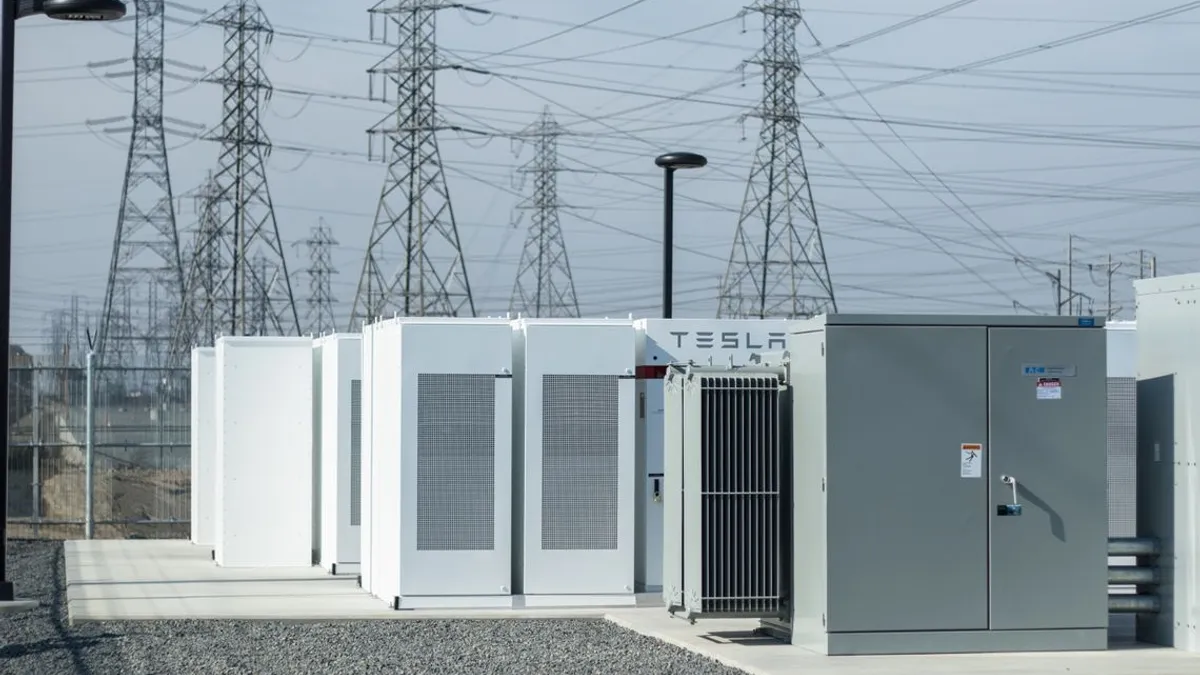Measures to curb the COVID-19 outbreak could reduce previous forecasts for global energy storage deployments by 19%, according to a report from Wood Mackenzie Power & Renewables — but the sector is still “set to thrive” over the next five years.
If the pandemic causes an economic downturn and restrictions on the movement of goods and people continue through the second quarter of the year, analysts would need to shave 3 GWh of storage capacity from prior estimates. The firm also forecasts a 10% reduction in the supply of lithium-ion batteries. However, the global storage market is still expected to grow 13-fold by 2025, to 230 GWh, and the total pot of energy storage investments is predicted to increase from $18 billion last year to $100 billion by 2025.
“The fundamental drivers of this market haven’t changed,” Rory McCarthy, principal analyst with Wood Mackenzie’s global energy storage team, told Utility Dive.
“When we look across the individual macro trends of renewables, and off the back of renewables growth energy storage proliferating… the growth basically just continues on that somewhat exponential curve,” assuming the economy recovers, he added.
The COVID-19 pandemic is moving faster and having greater impacts on the energy sector than anyone could have predicted even four weeks ago, McCarthy said. The sector is grappling with restrictions and the increasing costs of travel and equipment getting delayed at ports, he said. Like everyone else, the storage industry is trying to adopt remote working protocols and virtual tours of plants, “but ultimately these are all things and measures that people aren’t used to doing,” he said.
Economic turmoil associated with the pandemic could also impact the deployment of storage projects — particularly residential projects, which are a high-cost luxury item, according to McCarthy. And with the current oil crisis and the corresponding decrease in gas and electricity prices, there might be less of an incentive for some customers to deploy an expensive system that would reduce their bills.
But even with the reduced forecast, 2020 is likely to be a record-breaking year for storage, with 12.6 GWh of deployments. The numbers for 2020 were double that of 2019 — driven largely by growth in the United States, as well as Australia and China, which have a lot of projects in the pipeline, according to McCarthy.
"Unless they are kicked down the road to 2021 as a result [of the pandemic], 2020 will prove to be a record year," he added.
Renewables growth and policy mandates could drive the storage industry
One reason the storage sector isn’t as impacted by COVID-19 in the long run as some other industries is that it’s driven largely by mandates, Shanthi Muthiah, managing director and senior vice president of energy at ICF, told Utility Dive .
“There’s still long-term targets in play, and that’s driven the vast majority of storage development activity to date. And many of those have dates that are still several years out so I think… there’s still development potential that’s likely to go forward on that basis — especially if this is a multi-month type of slow down, as opposed to something that’s two or three years,” she said, adding, “It’s a slightly different story than say solar projects or other projects that might have a different sort of driver.”
At the same time, there are many considerations that could influence the scale and timing of future storage deployments, Muthiah said — for instance, the possibility of a prolonged recession and meaningful reductions in demand, as well as potentially multiple rounds of stimulus packages.
Another factor driving the need for storage in the long term is the increasing amount of renewables on the grid, Manfei Wu, senior energy markets consultant at ICF, told Utility Dive. Power market volatility is going to generate more demand for flexible capacity and a push for more storage to come online. But this too is dependent on how severe the impact of the COVID-19 pandemic is on the economy, and “the capability of the economy to pay for the increasing amount of renewables and really stick to the original RPS and any mandates they might have for renewables and storage — I think that’s the key element in the long term,” she said.
The storage sector is seeing “a blip in the market” with a lot of people either not working or working remotely, David Mauer, vice president of sales and services at storage lifecycle management firm Renewance, told Utility Dive. However, he already sees signs that restrictions are loosening up and estimates that most projects face a four to six-week delay.
However, he remains optimistic about the sector’s long-term prospects, with battery prices coming down, storage-related mandates and the emergence of more and more use cases for solar-plus-storage systems. On the whole, there are “a lot of good tailwinds, if you will, behind storage — there will be some slowing, I’m sure, through this but I and most people I talk to are pretty optimistic that it’s a slowing, not a long-term impact,” he said.























